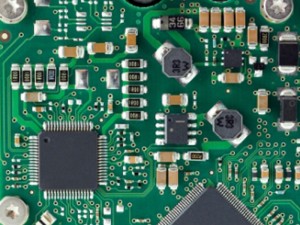Import growth up 6.6% in July

Philippine imports rose 6.6 percent in July from a year earlier, but the country’s main import item, electronics and semiconductor, fell 28.6 percent, official data showed Tuesday.
The trade deficit in July was $570 million, bringing the deficit for the seven months to July to $6.31 billion.
The Philippines imports nearly all of its crude oil requirements and is one of the world’s biggest rice buyers.
China was the country’s top import source, accounting for 11.5 percent of total purchases in July, followed by Japan with 9.6 percent and the United States with 9.2 percent.
Imports from Eastern Asia—the top import source by economic bloc accounting for 36.6 percent of total shipments—were up 4.7 percent in July from a year earlier.
Southeast Asia and the European Union were the second- and third-top economic blocs.
Economic Planning Secretary Cayetano Paderanga has said the government’s 2011 macroeconomic targets, including the 9- to 10-percent export growth estimate and 17- to 18-percent imports growth forecast, would be reviewed after second-quarter growth slowed more than expected.
Exports grew 34 percent and imports 27 percent in 2010.
Apart from electronic parts and fuel, the Philippines’ other top imports are cereals such as rice, electrical and industrial machinery, and transport equipment.
The government had set a 7- to 8-percent growth target this year, but it assumed growth of 5 percent in its budget this year. The economy grew 7.6 percent last year.
Betty Wang, research analyst at Standard Chartered Bank in Hong Kong, said Philippine imports remained lackluster in July with the growth pace much smaller than that of first quarter.
“The lack of improvement in the electronics sector dampened local importers’ intentions to sign purchase contracts at this stage, although the appreciation of Philippine peso in July has benefited international trading business,” she added.
“The anemic trade sector is a drag to the domestic economic growth in second quarter in addition to the disappointing investment performance. We expect the trade performance to still be a blow to the GDP growth in the second half if the electronics sector is still slow to recover on the back of weak global demand,” Wang said.
George Worthington, chief economist at Asia-Pacific IFR Markets in Sydney, said exports appeared to be falling much faster than producers had expected, and “they have failed to cut their purchases quickly enough, pointing to an unwanted buildup in inventories that should see an even larger fall in electronics imports in August.”
“For the 12 months to July, the Philippines posted a budget deficit of $6.9 billion, up from $6.5 billion in the year to June and the worst result in two years. It was still only about three-quarters of the peak deficit of $8.7 billion reached exactly three years ago, however, though the more than doubling in the annual shortfall since the end of 2010 means net exports will prove a significant drag on growth this year,” he warned.—Reuters
